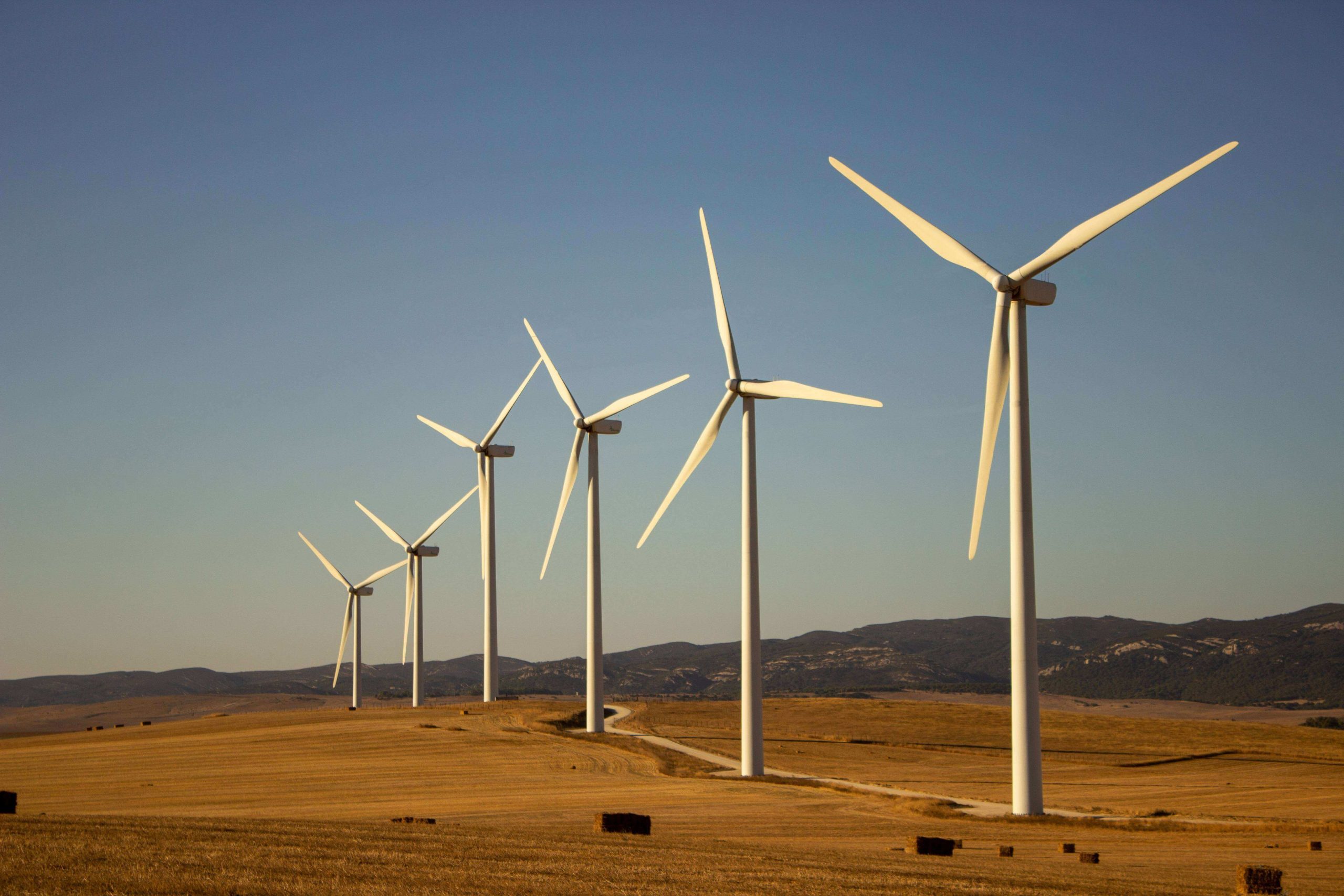What is Wind Turbine?
Wind power has been harnessed for centuries. The first recorded use of wind energy solution dates back to 200 BC when simple windmills were used to pump water and grind grain. Today’s wind turbines are highly efficient. On average, they convert about 40% of the kinetic energy in the wind into electricity, with some of the most advanced models achieving conversion rates of up to 50%.
A wind turbine is a machine for converting the kinetic energy in the wind into mechanical energy. Wind turbines are at the forefront of renewable energy generation when it comes to utilizing the power of the wind. These contemporary marvels come in a variety of sizes and forms, and each is made to effectively collect the kinetic energy of the wind. In this blog, we’ll look at the various kinds of wind turbines that are influencing the direction of clean energy in this blog.
Types of Wind Turbines
There are two different types of wind turbines:
- Horizontal-axis turbines
- Vertical-axis turbines
1) Horizontal Axis Wind Turbines (HAWT)-
Wind turbines like this usually have three blades, like airplane propellers. They’re placed on a tall tower, with all their parts, including the blades, shaft, and generator, on top. The blades point towards the wind, and the shaft is flat. Most of the wind turbines we see are horizontal wind turbine.
- These are the most common types of wind turbines.
- They have a horizontal rotor shaft, with blades that resemble an airplane propeller.
- HAWTs are suitable for both small-scale residential installations and large utility-scale wind farms.
- A typical HAWT can generate electricity with capacities ranging from 1 kW to over 10 MW.
- In 2022, global HAWT installations contributed to over 97.3% of total wind power capacity.


2) Vertical Axis Wind Turbines (VAWT)-
The vertical-axis wind turbines have blades that are attached to the top and the bottom of a vertical rotor.
The most common type of vertical-axis turbine—the Darrieus wind turbine, named after the French engineer Georges Darrieus, who patented the design in 1931—looks like a giant, two-bladed eggbeater. Some versions of the vertical-axis turbine are 100 feet tall and 50 feet wide. Very few vertical-axis wind turbines are in use today because they do not perform as well as horizontal-axis turbines.
- VAWTs have a vertical rotor shaft, with blades that rotate around it.
- They can capture wind from any direction and are often used in urban environments or where aesthetics is a concern.
- While less common than HAWTs, they have unique advantages of wind energy in certain applications.
- VAWTs are typically smaller, with capacities ranging from a few hundred watts to a few megawatts.
- These turbines account for about 5% of global wind power capacity in 2022.
Also Read: How Wind Power Works


Frequently Asked Questions About Types Of Wind Turbine
1) How Are Wind Turbines Classified?
Wind turbines are classified based on their axis, which can be either horizontal or vertical. The primary classification revolves around the orientation of their rotor axis, leading to two main categories: horizontal-axis turbines (HAWT) are the most common and look like propellers on a tall tower and vertical-axis turbines (VAWT) have blades attached from top to bottom and are less common. HAWTs are the most common type, constituting approximately 97.3% of global wind power capacity in 2022, while VAWTs represented about 5%.
2) What Are The Parts Of A Wind Turbine?
A wind turbine is made up of several crucial parts. The blades, which are normally three in number and serve to capture the wind’s energy, come first. A central shaft is attached to these blades. The shaft rotates in tandem with the blades because of the wind. A generator attached to the shaft transforms the mechanical energy from the rotating shaft into electrical power. The entire structure is put on top of a tall tower to sustain these parts and gather wind at a higher altitude. Together, these crucial components enable a wind turbine to capture wind energy and produce electricity.
3) What Is Nacelle In Wind Turbines?
A wind turbine’s nacelle is like a control center. This is a protective enclosure that houses critical components such as transmissions, generators, and other electrical and mechanical systems. The nacelle is typically located behind the turbine blades and mounted at the top of the tower. It plays an important role in maintaining and controlling the operation of the turbine, converting the mechanical energy of the rotating blades into electricity, and ensuring efficient and safe operation of the turbine.
Inside the nacelle, the following components can be found:
- Generator: It is the generator’s job to convert the mechanical energy that the turbine’s rotating blades produce into electrical energy. Electromagnetic induction helps to speed up this process.
- Gearbox: In many wind turbines, a gearbox is used to accelerate the low-speed shaft that is connected to the rotor’s rotation in comparison to the high-speed shaft that is connected to the generator. The generator can produce electricity more effectively thanks to this amplification.
- Control Systems: To monitor numerous parameters, including wind speed, direction, and turbine performance, sophisticated control systems are placed within the nacelle. To maximize energy production and guarantee safe operation, these systems modify the orientation of the turbine and the pitch angle of the blades.
- Cooling and Ventilation: Given the significant heat generated by the generator and gearbox during operation, the nacelle is equipped with cooling and ventilation systems to maintain optimal operating temperatures.









